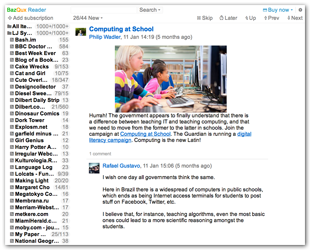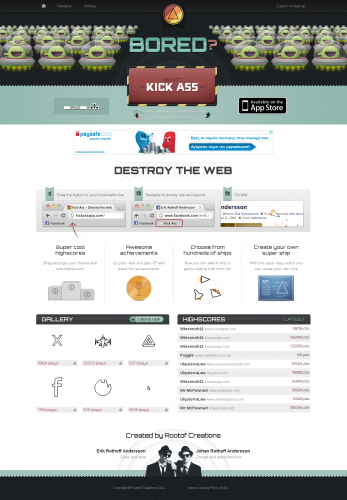One of the first start-ups that I participated in was an effort to create a better RSS reader. It way back a few years, before Google Reader was even launched, and the best option you had was Bloglines, which in itself was horrible at the time. One of the things that we were implementing was the support for comments in the blog posts and articles. Even back then many blogging engines and content management systems (CMS) supported comment feeds. Too bad the whole thing failed.
But even with quite a few upgrades to Bloglines, and launch and redesign of Google Reader, and, in fact, launch and development of many other RSS readers, support for comments is still a rare feature to see. Recently, I came across a web-based RSS reader that promoted comments as one of its primary features – BazQux Reader.
I tried it and it seems to work fine. However, it’s still too fresh for me to move all my RSS subscriptions over there. Especially considering the fact that you can only have 15 RSS feeds in the free demo. A full featured yearly subscription is about 25 Euro. I don’t mind paying that for a tool that I use many hours a day. But after using BazQux Reader for a bit, I don’t think it’s quite ready yet. Maybe one day.
P.S.: Oh, and if you were wondering what kind of a name is BazQux – it’s a combination of two metasyntactic variables “baz” and “qux“. Sort of like “foo” and “bar“. You probably won’t get it unless you are software developer of some kind.


